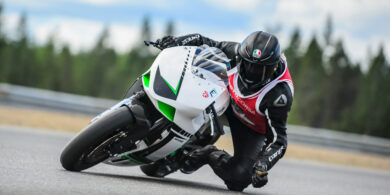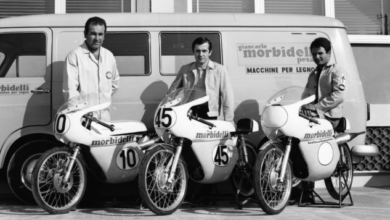TRENDLINE – Utility Vehicle Market on Major Upswing
EDITOR’S NOTE: Powersports Business and Power Product Marketing (PPM), the Minneapolis research firm, hav been following the North American utility vehicle (UTV) market for several years. UTVs encompass a broad number of vehicle types. Probably the two most important considerations are that UTVs typically have bench or bucket seats for one or more passengers as opposed to ATVs where single passengers straddle the machine like a motorcycle. Another consideration is that UTVs typically have rear dump beds, although some analysts include personnel carriers as UTVs where the cargo bed is replaced by additional seating. This market has taken on new dimensions in recent years with the surge in sales and new OEMs entering the market. Here is the most recent report prepard by Dave Crocker of PPM.
During 2001 and 2002, the North American UTV market was impacted by the recession, holding at the 100,000 unit level as whatever gains made in the consumer segments of the market then were offset by ongoing declines in the commercial segments such as golf, resorts and industrial applications.
During 2003, the overall UTV market increased 17% from 104,000 units to 122,000 units as the U.S. economy recovered in the second half of the year after a long two-year slump. Turf type trucks, excluding personnel carriers, industrial type trucks and Chinese mini pickups, accounted for about 85% of that number.
Last year, the market jumped about 45% over 2003 to about 177,000 units with turf type trucks accounting for 90% of the sales. According to our analysis, the commercial segment overall appears to have finally rebounded by nearly 30% in 2004 after several consecutive years of declining sales.
The consumer segment, however, shot up about 60% last year on top of the near 40% increase during 2003. This was a result of several developments: the recovering economy, new competitors entering and penetrating the market through their channels and customer bases and established OEMs introducing new upgraded series and brand new models. Examples of these were Kubota, Yamaha, Deere, Club Car, E-Z-Go, Brister’s, Landpride and Yerf-Dog.
CONSUMER VS COMMERCIAL
According to our analysis, consumer applications, which include Farmers & Ranchers and Homeowners (large-acre estates, hobby farms and hunting/sport), accounted for nearly 60% of total North American UTV sales during 2004 compared to about 40% for all commercial applications.
The consumer segment has surged since 2000 from 29% in 1998 and 36% in 2000 to 45% in 2002 and 52% in 2003. In 1995, we estimate consumers accounted for 22% of North American UTV sales compared to 78% that was predominantly commercial applications.
MAJOR OEM SHARES
Up until 2004, five OEMs essentially dominated the North American UTV market: John Deere, Kawasaki, Polaris, Textron and Ingersoll-Rand. In 2002, they accounted for 85% of the market, which slipped to 77% in 2003.
During 2004, however, two new formidable OEMs – Kubota and Yamaha – entered the market, which significantly impacted the competitive landscape.
Although Deere is still considered the leading manufacturer of UTVs with their Gator product line, their share has been eroding as new players enter the market and existing manufacturers expand their product ranges. Deere Gators sell well across all applications and estimates are that their share may have slipped to about 20% of the market last year from what we estimate was 22% in 2003, 26% in 2002 and 28% in 2001.
This occurred in spite of the fact that the company took a major initiative over the last two years to upgrade its old Standard 6×4 and 4×2 Gator products and registered a huge sales increase in 2004. A new HPX series was launched in late 2003 along with a new CS/CX compact UTV series. In addition, a new Traditional-series with air-cooled engines was launched late last year.
Yamaha surged to number two in the market in the course of one year on the strength of its Rhino numbers, which is sold through its motor sports dealer body along with its new Pro Hauler series. However, Yamaha’s separate Golf and Turf dealer organization also marketed G-MAX and U-MAX series UTVs during 2004 that sold very well. Both Pro Hauler and G-MAX/U-MAX series are adaptations of Yamaha’s gas and electric golf car chassis. We calculated that Yamaha could have had as much as 13% of the total North American UTV market last year.
Polaris appears to hold the third position among leading UTV brands and has been tremendously successful with the new Ranger II series since its introduction in the spring of 2001. According to our surveys, Polaris is the third leading brand in the North American market with about a 12% share.
Kawasaki has been selling its popular Mule brand longer than anyone, with the possible exception of Cushman. The company introduced its new look 3000 series in the spring of 2001 but, along with Deere, appears to have lost significant sales in recent years to Polaris and more recently Yamaha.
Our best estimate is that Kawasaki accounted for perhaps 10%-11% of 2004 North American UTV sales. During 2004 Kawasaki private labeled its 3010 4×4 gas model for joint venture partner Suzuki that they called the Q.U.V. 620. However, this arrangement will end this year, after which Suzuki will develop its own UTV product(s).
Textron and Ingersoll-Rand (IR) appear to be running neck to neck in the race for the fifth position. Textron is comprised of E-Z-Go, Cushman and Jacobsen product lines, and the E-Z-Go ST-series appears to have caught on with consumers.
I-R is represented by the Club Car and Melroe (Bobcat) lines. Club Car appears to be stronger in the commercial segments compared to rival E-Z-Go and it had considerable success with its new 4×4 gas and diesel UTVs that sold well through both Club Car and Bobcat dealer bodies.
We estimate that Textron and I-R each had shares of nearly 10% last year. Both E-Z-Go and Club Car appear to be doing a commendable job of diversifying away from their traditional golf car markets into UTVs and in particular the unfamiliar consumer segments.
Another newcomer that sprang up in 2004 is Kubota with its new diesel RTV900 4×4 hydrostatic model that appears was the number one selling model in the market last year, ahead of Polaris’ popular Ranger 4×4. Despite two announced recalls, the model continued to sell well with what we estimated was about a 9-9.5% share in the market, just behind Textron and I-R.
All other OEMs comprised about 15% of the remaining 2004 North American UTV market. They primarily include Taylor-Dunn, Yerf-Dog, Toro, Cub Cadet (MTD), Brister’s and Landpride.
OTHER DEVELOPMENTS
With well over 30 competitors now selling UTVs into the North American market, there doesn’t appear to be any letup in new entries.
Arctic Cat introduced its new 650cc 4×4 Prowler this summer, which has the potential to be a big seller. Bush Hog has finally launched its new Trail Hunter and Trail Hand series. Yamaha recently launched a smaller displacement version of the Rhino and combined sales of both models are expected to approach 25,000 units this year. Lurking in the background is Honda who has long been rumored to have a UTV product line it is waiting to unveil.
We can also expect to see Chinese manufacturers begin to penetrate this market before long as they have in the adult-size ATV market once they develop larger displacement engines. Several OEMs are known to have prototypes they are about to launch.
Will these, too, be marketed through large retail outlets as we have seen with ATVs, small displacement motorcycles and dirt bikes?
Based upon our research and expectation of a continuing strong economy, we could see North American UTV sales top 225,000 units this year and possibly 275,000 units by 2006 with consumers approaching two-thirds of sales.
– Dave Crocker is senior partner for Power Products Marketing, a market research firm based in Minneapolis, Minn. PPM (www.powerprods.com) specializes in the power products and components, powersports and marine industries. Crocker may be reached at 952/893-6870 or at dcrocker@powerprods.com.




